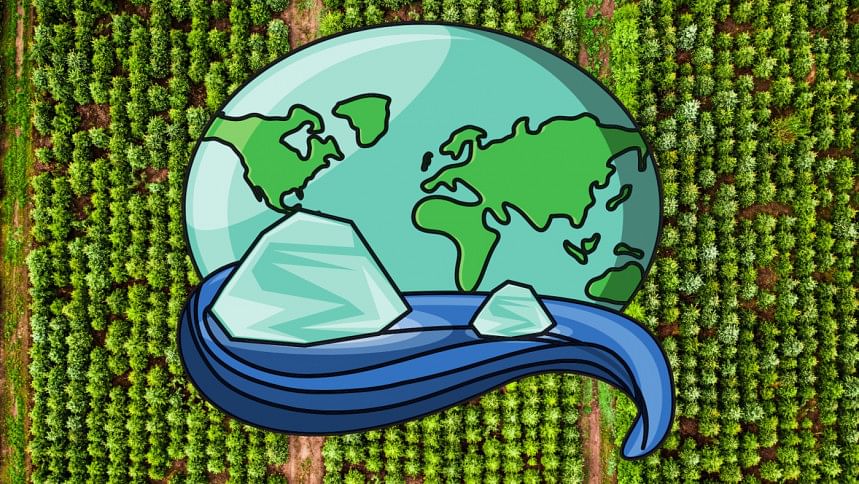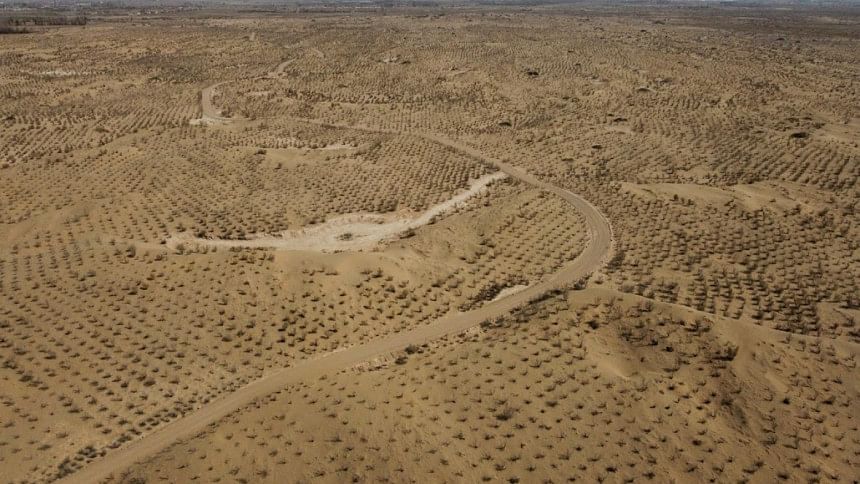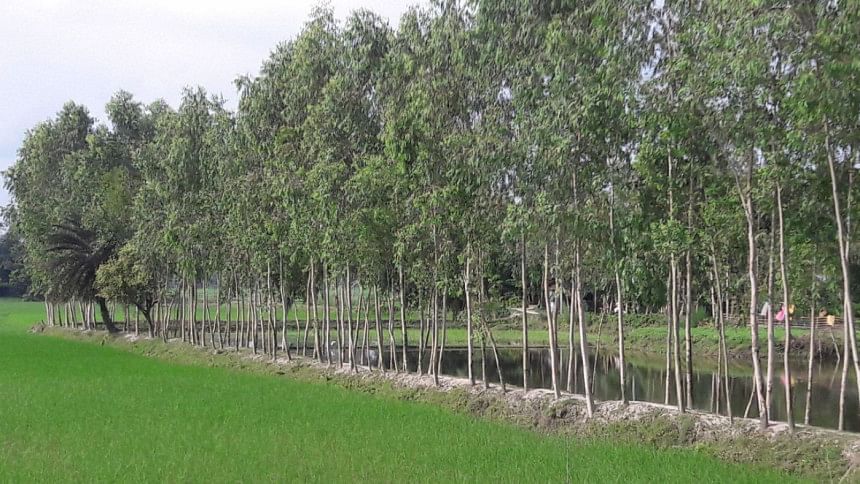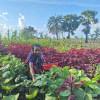Why planting as many trees as possible may not be the solution to the climate crisis

The heatwave currently searing Bangladesh has led to renewed focus on reforestation efforts. On social media, calls to take up tree-planting drives, and even take on the challenge of creating a world record for planting trees are being peddled.
While more trees are good for the environment in general, the species of these trees and where these trees are planted are vital considerations to make sure it ends up benefiting the environment. Further, the human and economic factors are important too, as trees need to be cared for after they're planted and it needs to make economic sense for the approach to be sustainable.
There have been quite a few examples of large-scale tree planting efforts taken up by different countries in the recent past, but many of them fail to make the impact they were expected to. In 1978, China began a project called the Three-North Shelter Forest Program, also known as the Great Green Wall. The goal was to plant multiple forest strips that were designed to hold back the expansion of the Gobi Desert. This approach of planting trees where no natural forest has existed is called afforestation, and while China can claim certain levels of success from this project, there have been criticism and setbacks too.

For instance, the BBC reported in 2020 that the level of carbon absorption increase due to China's afforestation efforts was more than expected, and is likely to play a significant role in tempering the country's climate impact. Deutsche Welle reported in 2022 that the Gobi Desert had started shrinking by 2,000 square kilometres per year.
At the same time, critics point at the risk of depleting groundwater reserves due to excessive tree planting, as reported by American magazine Wired in 2003. In China, as in other similar projects in other countries, large-scale tree plantations usually use one or a handful of species that grow rapidly and provide high wood yield, as these types of trees are known to be better at carbon recapture by storing it in their large trunks. The problem with that is it creates monoculture forests, where the lack of diversity leaves the trees vulnerable to disease.
In the Ningxia region of China, one billion trees were lost to a single disease in 2001 because of this. Additionally, researchers in China published a paper in 2011 explaining that China relies too heavily on its afforestation projects. The paper said that between 1952 and 2005, only 15 percent of the trees under the Great Green Wall project survived, and the overall desertification process in all of China did not slow down.

Another similar story is one that played out in Turkiye in 2019. Volunteers from around the country planted around 11 million trees in one day, including a world record in the Corum province, where over three lakh trees were planted in one hour.
However, The Guardian reported in 2020 that the country's agriculture and forestry trade union and relevant ministry were in disagreement over how many of the trees survived. The union said that 90 percent of the trees they inspected were dead due to a lack of water, and because they weren't planted at the right time or by experts.
Does this mean all efforts for large-scale tree planting are doomed? Not necessarily, if the right lessons are learned and the right approach is taken. Across the hall from the afforestation approach is reforestation, a process of planting trees where a forest has naturally occurred in the past.
Research published in Nature in 2019 by researchers in the UK showed that the best strategy to ensure the maximum amount of carbon is stored in the ground as opposed to the atmosphere is to let all natural forests regrow. The research was done to examine plans under the Bonn Challenge, a project where multiple countries across the world have committed to restoring 350 million hectares of degraded forest land. The countries' strategy involces a mix of tree plantation and natural regrowth, and this would lead to capturing 16 gigatons of carbon until the year 2100. However, naturally regrowing forests on the same amount of land would lead to 42 gigatons of carbon capture.
This is because most plantations of high wood-yielding trees are eventually cut down and replaced with new trees, but this process ends up re-releasing the carbon back into the atmosphere if the wood is burned as fuel or put to other environment unfriendly uses. The risks of unplanned afforestation and reforestation, as faced by China and Turkiye for example, make natural regrowth of destroyed forest areas a much better idea.
So, what does all of this mean for Bangladesh's current heatwave? Once again, more trees are generally a good idea, but the approach behind tree planting needs to be scientific. Picking plants that are suited to a specific natural environment, ensuring monocultural ecosystems are avoided, and focusing on long-term environmental benefits over short term carbon-capture or wood-yield is vital.
The weather extremes we are facing now cannot be solved immediately, as they were not created overnight. To ensure our future is less heated than these current times, the trick is to be deliberative and knowledge-driven, instead of jumping on bandwagons and making rash decisions.

 For all latest news, follow The Daily Star's Google News channel.
For all latest news, follow The Daily Star's Google News channel. 









Comments